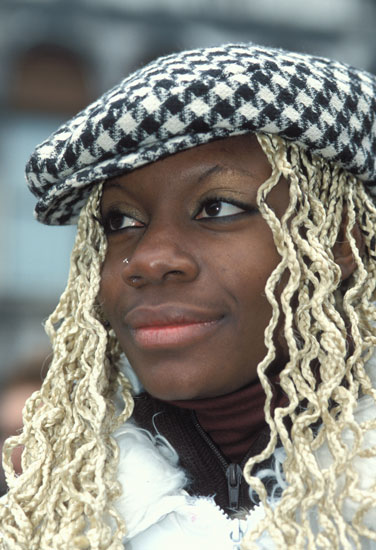 Choosing a lens to photograph a particular subject is never easy. There is no definitive answer - no perfect focal length. Selection must be based upon personal style and the type of image required. The same subject in the same location can be portrayed in numerous different ways without moving from the spot. A telephoto lens will reduce the field of view and apparent depth of field, and isolate subjects from their surroundings. A standard lens will give a more natural feel to the picture, with greater depth of field and perhaps some part of the surroundings included. A wide-angle lens will portray subjects in the broader context of their environment. Depth of field can be extensive, but care must be taken to avoid unsightly distortion.
Choosing a lens to photograph a particular subject is never easy. There is no definitive answer - no perfect focal length. Selection must be based upon personal style and the type of image required. The same subject in the same location can be portrayed in numerous different ways without moving from the spot. A telephoto lens will reduce the field of view and apparent depth of field, and isolate subjects from their surroundings. A standard lens will give a more natural feel to the picture, with greater depth of field and perhaps some part of the surroundings included. A wide-angle lens will portray subjects in the broader context of their environment. Depth of field can be extensive, but care must be taken to avoid unsightly distortion.
The eyes are the point of contact when communicating with people, and we tend to be drawn to them in a photograph, so it is important that they should be in sharp focus. If this is impossible because of limited depth of field, as in a profile, keep the nearer eye sharp and let the more distant one go soft. In general it is good practice to focus on the nearer eyelid. This is normally easy to achieve with manual or automatic focus, but subjects and photographers do move around. Depth of field can reduce to a few centimetres, so accurate focusing may become critical. Where this is the case, autofocus is certainly beneficial. It achieves the necessary precision very quickly, and consequently improves the chances of capturing the moment.
Ergonomic issues also have some bearing upon technique. When comfortable you are more likely to concentrate and attend to detail. Consequently it is worth making a situation as convenient as possible. Photographers can sit in open sewers in India to photograph disabled people at ground level, but it is difficult to ignore the unpleasant aspects. Under more normal circumstances a tripod may be desirable to steady a heavy lens but its physical size and inconvenience can also make it impractical. Similarly, reflectors may need to be positioned on a stand, held by an assistant or rejected in favour of the simpler on-camera fill-flash. In many situations they attract attention and are therefore not practicable.
In achieving a degree of convenience, don't allow yourself to become rooted to the spot. Remain mobile - move up and down and from side to side. This reveals numerous subtly different angles of view and gives some control over the background. Try chin level for a man to give him an air of authority, and forehead level for a woman to give a more demure image. Even in this politically correct modern world your subjects may prefer these views.






